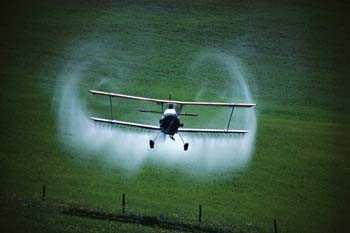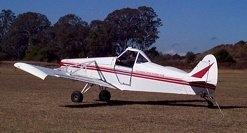Thu, May 15, 2014
Calls For Stronger Collaboration Between Regulators And Industry
The NTSB has released findings from its Special Investigation Report on the Safety of Agricultural Aircraft Operations. As a result of the safety issues identified in the study, the NTSB issued eight safety recommendations to the FAA and the National Agricultural Aviation Research & Education Foundation urging the two organizations to work together to develop and distribute agricultural operations-specific guidance on fatigue management, risk management, aircraft maintenance, and pilot knowledge and skills tests.

Agricultural operations, a niche group within the general aviation community, are subject to many safety hazards because they fly low enough to have to be concerned about obstacles such as power lines, communications towers, and meteorological evaluation towers. While these operations have historically ranked sixth or seventh among general aviation sectors in terms of hours flown, they have ranked third in terms of the number of annual accidents. Based on a review of these data and the findings from several agricultural operation accident investigations, last year, the NTSB initiated a special investigation to better understand the issues affecting the industry. During the 2013 aerial application season, the NTSB investigated 78 accidents, which included gathering information in the areas of pilot work and sleep schedules, pilot training and experience, and aircraft maintenance.
“Ag operations are inherently flown at low altitudes, often close to obstacles and hazards. That kind of flying requires rigorous risk assessment and risk management to operate safely,” said NTSB Board Member Earl Weener.

Investigators found that collisions with obstacles are a prevailing concern in the industry. In addition to the special report and recommendations, the NTSB issued a new Safety Alert, “Preventing Obstacle Collision Accidents in Agricultural Aviation.” The alert encourages ag-operators to conduct thorough preflight and aerial surveys, use technology to identify and maintain awareness of obstacles, and have a better understanding of the performance limitations and requirements of their aircraft. A companion Video Safety Alert was created and released to help inform and educate pilots, operators, and maintenance personnel.
(Images from file)
More News
From 2014 (YouTube Version): One Of The Airshow World's Pre-Eminent Formation Teams Chats About The State Of The Industry At EAA AirVenture 2014, ANN News Editor Tom Patton gets th>[...]
Tactical Air Navigation (TACAN) An ultra-high frequency electronic rho-theta air navigation aid which provides suitably equipped aircraft a continuous indication of bearing and dis>[...]
Aero Linx: Doobert Hi, we're Chris & Rachael Roy, founders and owners of Doobert. Chris is a technology guy in his “day” job and used his experience to create Doobe>[...]
The Airplane Was Spinning In A Nose-Down Attitude Before It Impacted Terrain On June 20, 2025, at 0900 eastern daylight time, a Pitts Aerobatics S-2B, N79AV, was destroyed when it >[...]
Also: United Elite Sues, Newark ATC Transitions, Discovery Moves?, Textron @ KOSH The Commemorative Air Force Airbase Arizona is taking its “Flying Legends of Victory Tour&rd>[...]
 Classic Aero-TV: Up Close And Personal - The Aeroshell Aerobatic Team at Oshkosh
Classic Aero-TV: Up Close And Personal - The Aeroshell Aerobatic Team at Oshkosh ANN's Daily Aero-Term (07.13.25): Tactical Air Navigation (TACAN)
ANN's Daily Aero-Term (07.13.25): Tactical Air Navigation (TACAN) ANN's Daily Aero-Linx (07.13.25)
ANN's Daily Aero-Linx (07.13.25) NTSB Prelim: Pitts S2
NTSB Prelim: Pitts S2 Airborne 07.09.25: B-17 Sentimental Journey, Airport Scandal, NORAD Intercepts
Airborne 07.09.25: B-17 Sentimental Journey, Airport Scandal, NORAD Intercepts




